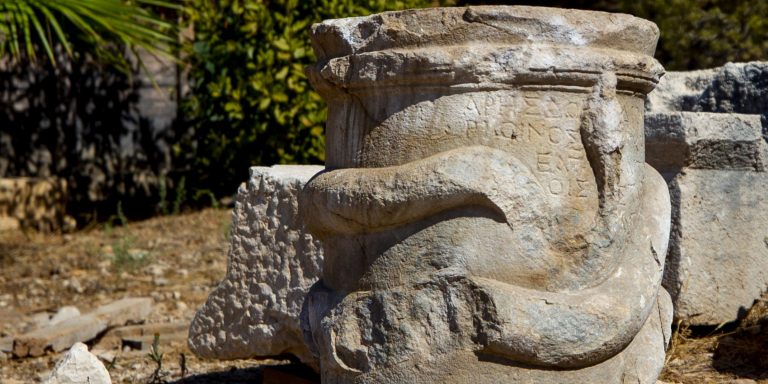A marble altar with an ancient Greek inscription has been discovered at the site of Patara, close to the south-west coastal city of Antalya in Turkey. The ancient Hellenic altar, which features a relief of a snake wrapped around the ancient stone with a Greek inscription, is thought to be over 2,000 years old.
Speaking to Turkish media, Mustafa Koçak, an archaeologist working at the site, noted that such an altar has never been found in the area, but similar finds have been discovered at other ancient sites. He hypothesized that the snake motif relates to the worship of the Gods, as people would make sacrifices and give offerings to the gods at altars like this one.
Koçak added that archaeologists have encountered sculptural forms of large snakes throughout their excavations that resemble the one found on the altar, and theorized that they may have also been others present in the city during ancient times.
Further study and translation of the Greek inscription may reveal more information about the use and historic context of the altar. However, in descriptions of the impressive find, the Turkish press has not even mentioned the presence of the ancient Hellenic inscription on the column.
Antalya, now known as a Mediterranean resort destination on Turkey’s southern coast, was once home to a prominent ancient Hellenic city. The ancient city of Patara, located in Lycia, where the altar was found, was a hub for commerce and maritime activity in antiquity.
Taking its name after its mythological founder Patarus, son of Apollon, Patara served as an important site in Hellenic and Roman antiquity. In 333 BC, Alexander the Great conquered the city, and it was governed by a series of emperors throughout its long history.
Patara’s strategic location in modern-day southwest Turkey helped it preserve its economic and cultural importance through the Byzantine period as well, and it has significance to Christians, since it was the birthplace of St. Nicholas, the bishop of Myra, in 270 AD. With its ancient history, and because it was continually inhabited for so many centuries, the site is home to many Hellenic and Roman ruins, including an impressive Roman-era theater.
There is an almost uncountable number of ancient Hellenic and Byzantine archaeological and historical sites in Turkey, many of which attract hundreds of thousands, even millions, of visitors every year. These countless sites in not only Turkey but around the world, serve incontrovertible evidence of the Hellenic people’s long, rich history and contributions to world civilizations.


No comments:
Post a Comment